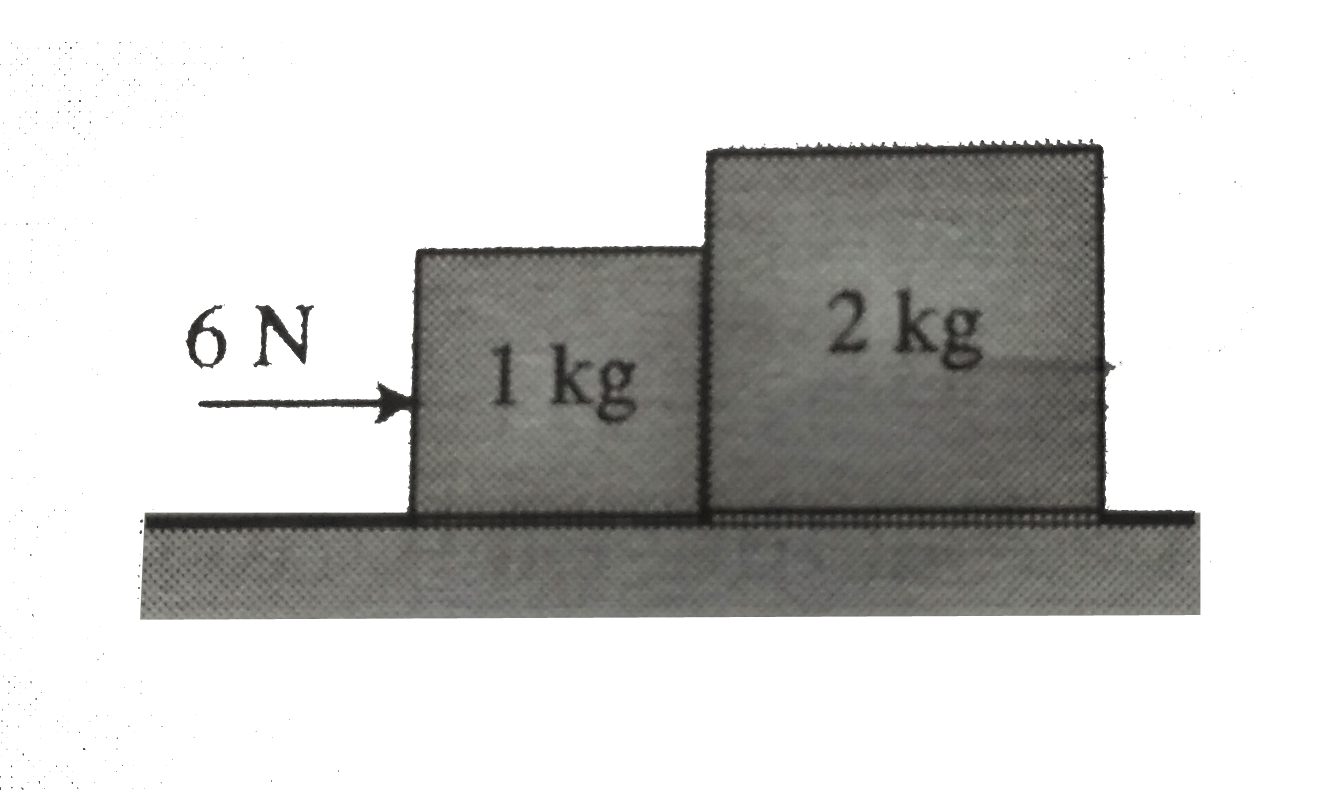A block of mass is placed on smooth horizontal surface over it another block of same mass is placed. horizontal force is applied on block .
: No block will move unless .
: Block A will move towards left.
: Acceleration of block B will never be less than that of .
: The relative motion between and will start when exceeds .

FFTF
The correct Answer is:C
Topper's Solved these Questions
Similar Questions
A block of mass 10 kg, moving with acceleration 2m/s2 on horizontal rough surface is shown in figure

View SolutionTwo blocks of masses 4kg and 2kg are placed side on a smooth horizontal surface as shown in the figure. A horizontal force of 20N is applied on 4kgblock. Find
(a) the acceleration of each block.
(b) the normal reaction between two blocks.

View Solution
Knowledge Check
Two blocks of masses 1 kg and 2 kg are placed in contact on a smooth horizontal surface as shown in fig. A horizontal force of 6N is applied on a 1-kg block. Find the force of interaction of the blocks.

A4NB5NC10NDnoneA block of mass m=5kg is resting on a rough horizontal surface for which the coefficient of friction is 0.2 . When a force F=40N is applied, the acceleration of the block will be (g=10m/s2) .
 A5.73m/sec2B8.0m/sec2C3.17m/sec2D10.0m/sec2
A5.73m/sec2B8.0m/sec2C3.17m/sec2D10.0m/sec2A block of mass 5kg is lying on a rough horizontal surface. The coefficient of static and kinetic friction are 0.3 and 0.1 and 10m/s−2. If a horizontal force of 50N is applied on the block, the frictional force is
A25NB5NC10NDZero
A 3kg block is placed over a 10kg block and both are placed on a smooth horizontal surface. The coefficient of friction between the blocks is 0.2. IF a horizontal force of 20N is applied to 3kg block. Find the acceleration of the two blocks.

View SolutionA block of mass 50 kg is kept on another block of mass 1 kg as shown in figure. A horizontal force of 10 N is applied on the 1 kg block. (All surface are smooth). Find (g=10m/s2)

Force exerted by B on A.
View SolutionA block of mass 50 kg is kept on another block of mass 1 kg as shown in figure. A horizontal force of 10 N is applied on the 50kg block. (All surface are smooth). Find
(g=10m/s2)
Force exerted by B on A.
View SolutionA block of mass 50 kg is kept on another block of mass 1 kg as shown in figure. A horizontal force of 10 N is applied on the 50kg block. (All surface are smooth). Find
(g=10m/s2)
Acceleration of block A and B.
View SolutionA block of mass 50 kg is kept on another block of mass 1 kg as shown in figure. A horizontal force of 10 N is applied on the 1 kg block. (All surface are smooth). Find (g=10m/s2)

Acceleratin of block A and B.
View Solution
